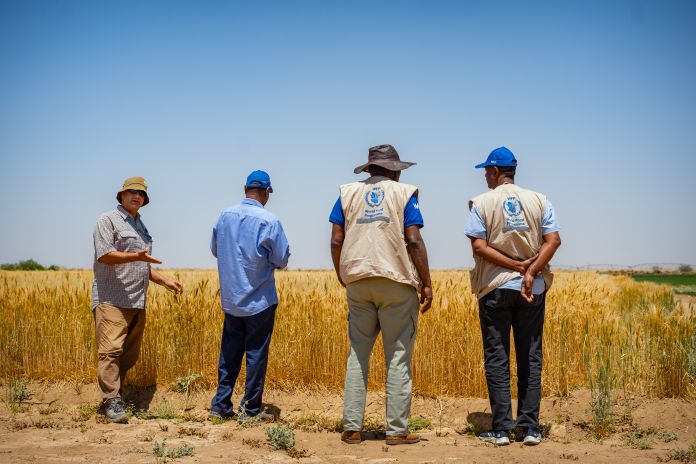PORT SUDAN / NAIROBI – The United Nations World Food Programme (WFP) and the African Development Bank (AfDB) announced today that the AfDB-financed Sudan Emergency Wheat Production Project had increased wheat production in the country by up to 70 percent in targeted project locations across five states in the last year. This development comes at a critical time as Sudan is facing a looming hunger catastrophe due to the ongoing conflict, which also impeded the past agricultural season.
“This wheat production project to the tune of USD 75 million financed by the African Development Bank became the heart of production in the critical moment in Sudan. It provided food security, yielding 645,000 metric tonnes of wheat this year, and also became a critical crisis response intervention to the Internally Displaced Persons (IDPs). More than 30% of the beneficiaries in the Northern State were IDPs,” said the Bank’s Country Manager for Sudan, Mary Monyau.
“The project was anchored on earlier game-changing wheat production projects – the TAAT Wheat Projects (2018-2021) – providing a clear example of how a longer-term development intervention can meet short-term emergency and humanitarian needs as well as forward-looking resilience building. We thank our development partner, the World Food Programme, for implementing this project and ensuring positive outcomes in at least five states, including Gezira State, Kassala State, River Nile State, White Nile State, and Northern State, even under circumstances of active conflict.”
“The ongoing conflict in Sudan has had a devastating impact on agriculture. Sudan produced merely half the wheat it would in a typical year. Thanks to funding from the African Development Bank, we were able to mitigate some of the impacts of this war on wheat production,” said Eddie Rowe.
The project had distributed climate-adapted wheat seeds and fertilizers to over 170,000 smallholder farmers in Gezira, River Nile, White Nile, Kassala, and Northern states, in the 2023-2024 agricultural season. It covered areas which are largely located in the relatively stable northern and eastern states of Sudan where conflict has not yet spread, as well as in conflict-affected areas such as Gezira and White Nile states.
The yield of 645,000 metric tonnes of wheat this year accounted for 22 percent of the total wheat consumption needs of Sudan. On average, farmers reported a 44 percent increase in productivity per hectare as compared to the previous season. Around 16,000 of the farmers who received support had been newly displaced by conflict in the last 13 months, offering them support and resources to rebuild their livelihoods. Further, the project provided 12 harvester machines to farmers associations in River Nile and Northern states to enable them to harvest produce more efficiently to avert losses.
Sudan is facing an unprecedented hunger catastrophe and is on pace to becoming the world’s largest hunger crisis. WFP estimates that more than two million people are at high risk of falling into IPC 5 (Catastrophe/Famine) across more than 40 hunger hotspots if they do not urgently receive humanitarian assistance.
Investments in agricultural productivity in Sudan are critical to increase crop yields and food availability in the face of devastating levels of violence and hunger. The African Development Bank provided a total of US $75 million to WFP for the implementation of the Sudan Emergency Wheat Production Project over the course of two years.





